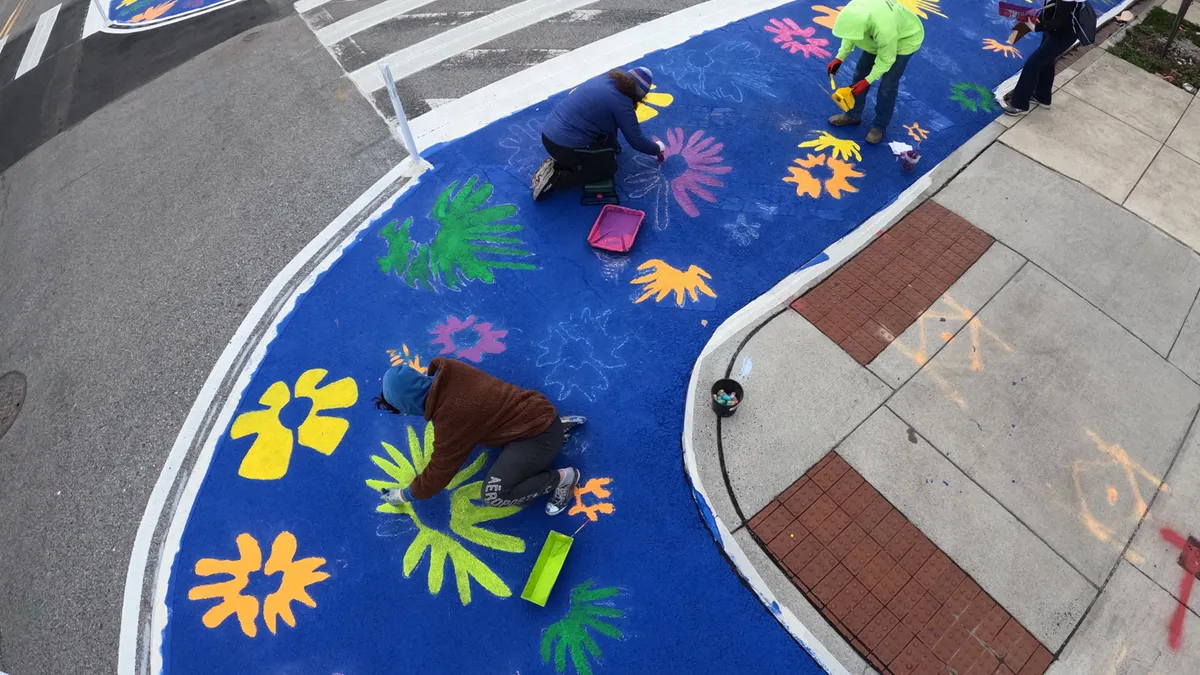Nineteen European cities — a list that includes Brussels, Helsinki and Madrid, among others — will implement art in intersections, crosswalks and other pedestrian spaces in 2023 with help from $25,000 grants awarded by Bloomberg Philanthropies, which supports such projects through its Asphalt Art Initiative.
The colorful transformations are more than a pretty sight. While some urban taxpayers have questioned the value of these community investments, proponents believe art promotes safer behaviors among drivers and pedestrians. After studying asphalt art with consultants, Bloomberg Philanthropies released new findings this year, indicating that areas with art installed see their rates of crashes involving pedestrians or other vulnerable road users cut in half.
The latest round of awardees last week follows multiple years of installations in the U.S. While many are yet to be completed, several of those announced last year wrapped up earlier this year. The costs of those completed projects reportedly ranged from $23,800 in Denver to $85,000 in Starkville, Mississippi. Here’s a look at what seven cities created:
Baltimore
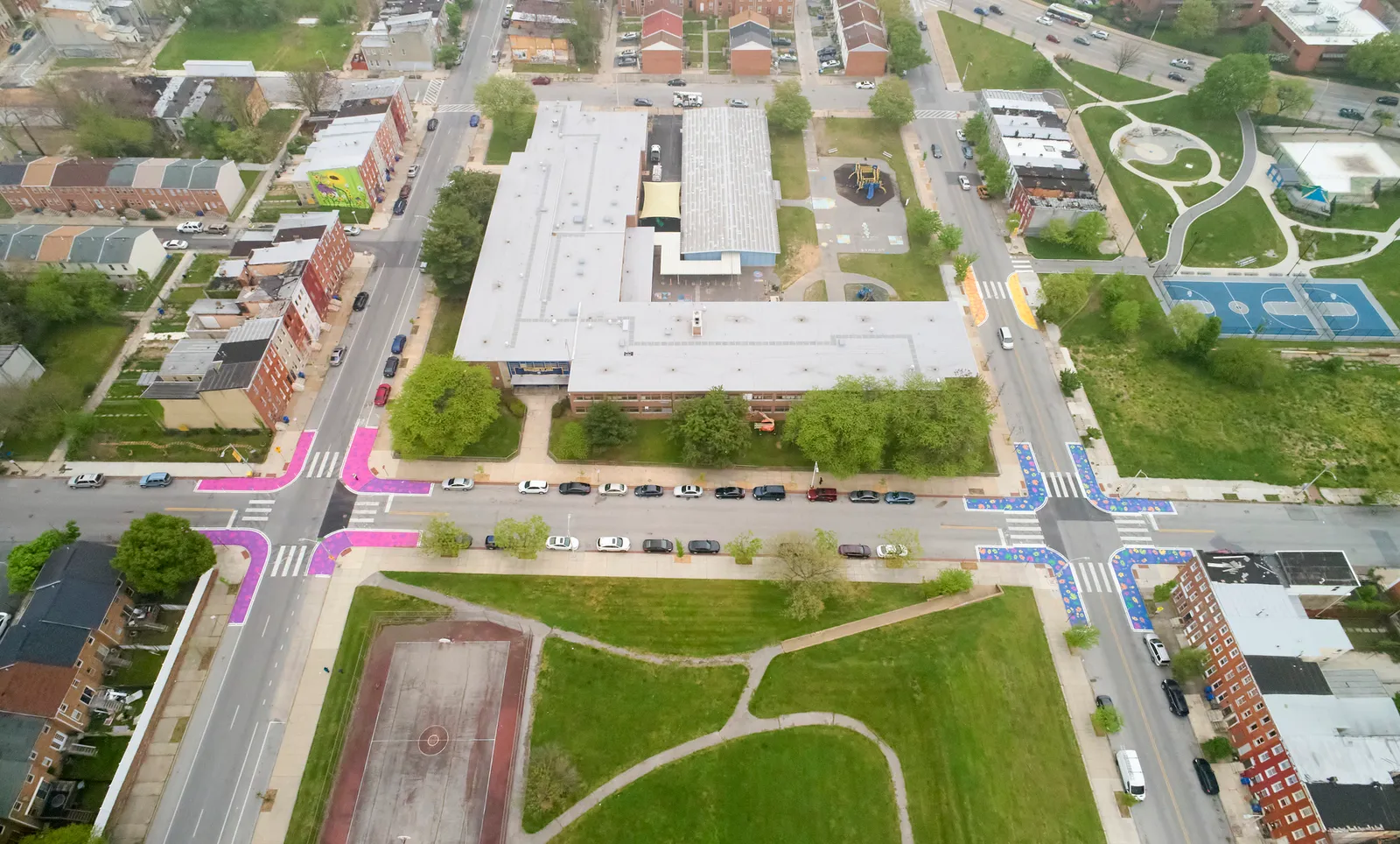
This spring, Maryland’s largest city focused its asphalt art efforts on speeding-prone intersections near an elementary school. Community design workshops informed the final product, which covers 5,800 square feet and cost nearly $47,000. In addition to the art itself, the design featured curb bump-outs and new and shortened crosswalks.
Billings, Montana

The Montana city sought to use street murals to connect specific neighborhoods to the commercial district. The 31,000-square-foot project cost shy of $31,000.
Denver

In one of the city’s oldest neighborhoods, Denver’s 1,100-square-foot project added murals and crosswalks to a single triangular intersection to create a community plaza. This summer's installation was designed to be temporary, aiming to test the concept and inform longer-term infrastructure improvements.
Fairbanks, Alaska
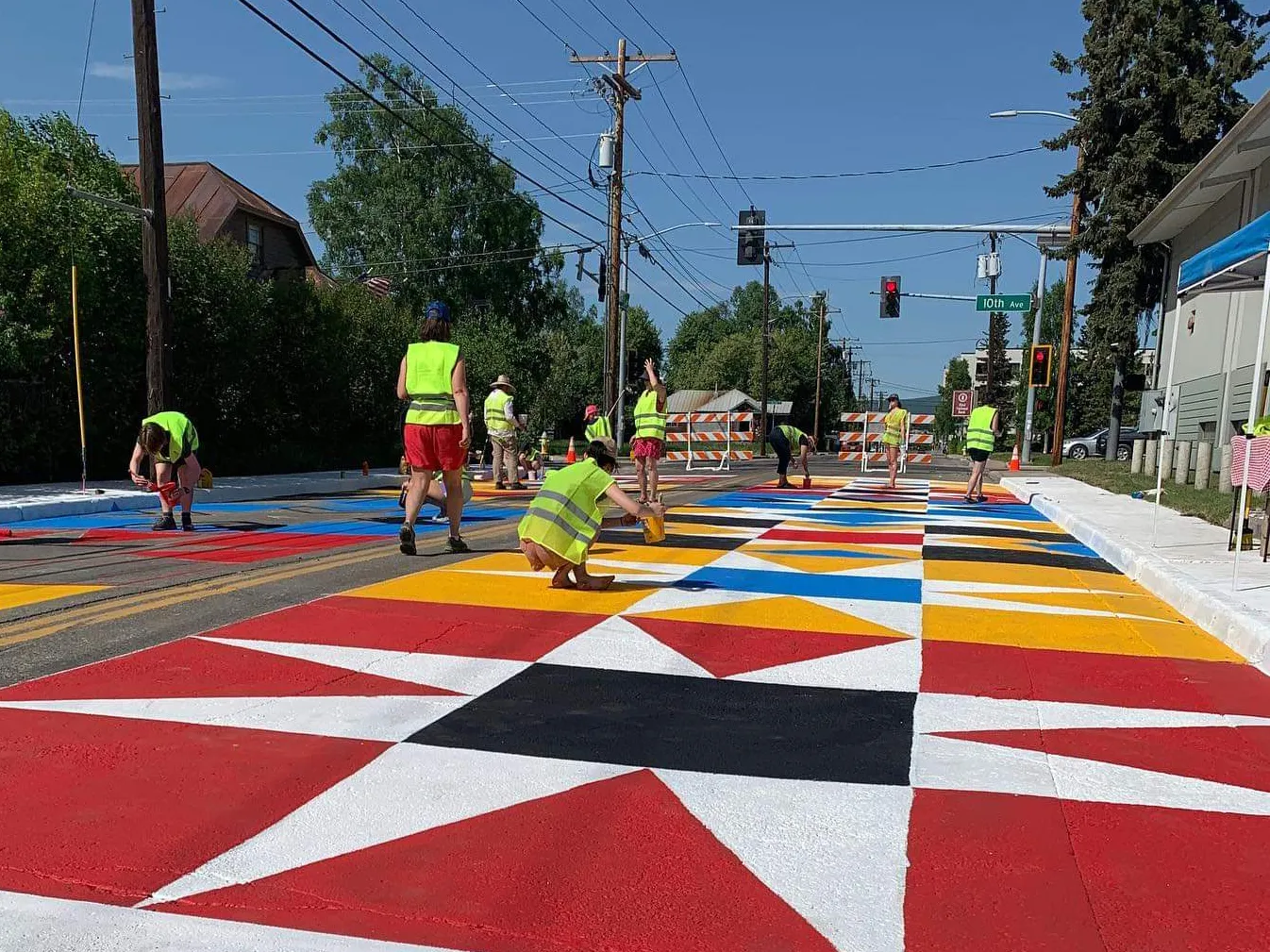
In June, Fairbanks added murals on downtown streets as part of broader initiatives to make streets more welcoming to pedestrians and cyclists and to boost green infrastructure. With sustainability in mind, the murals used soy-based biodegradable paint. The 20,000-square-foot installation cost over $37,000.
Huntington, West Virginia
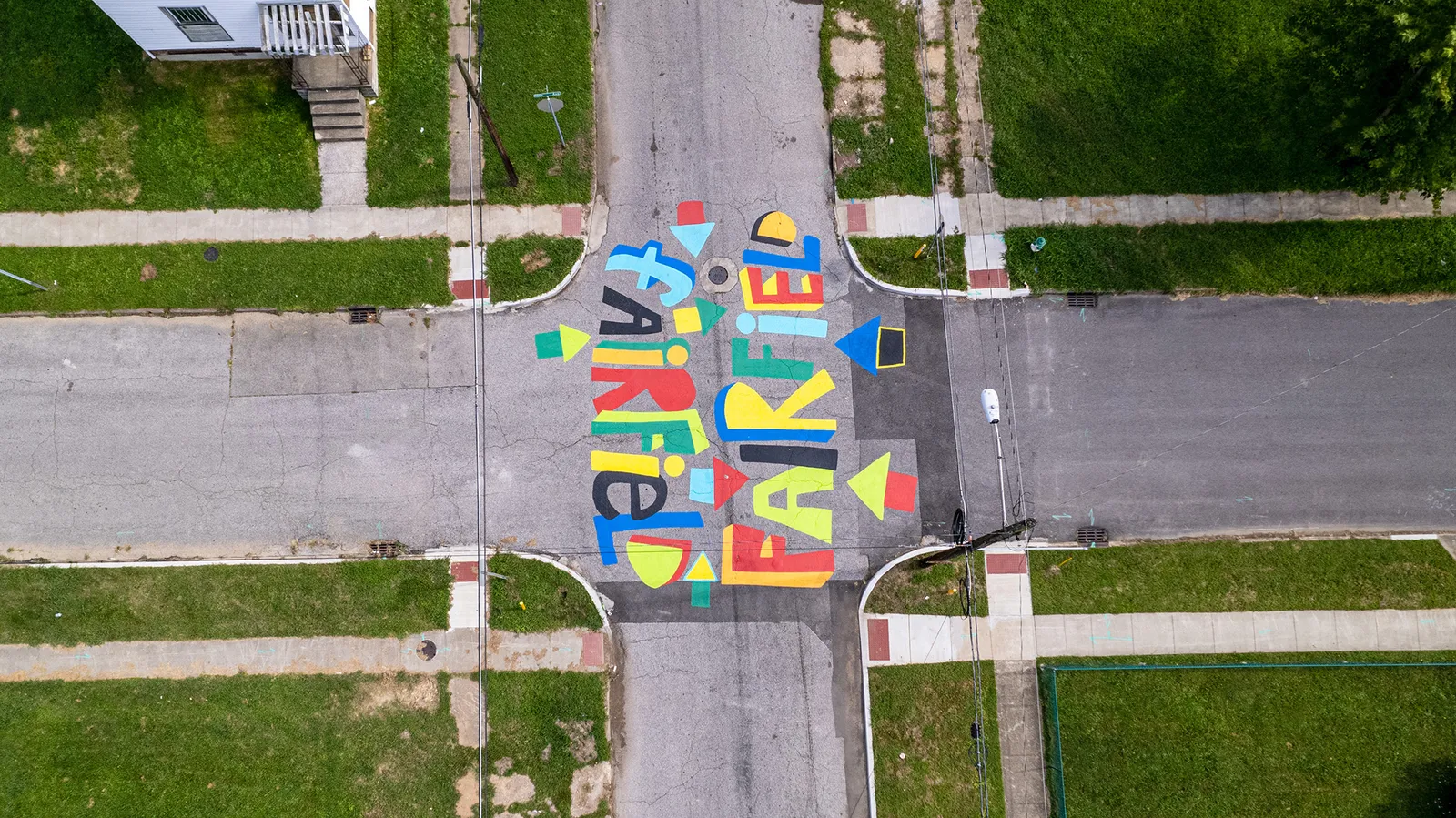
Huntington focused on placemaking by adding art to its three most distressed neighborhoods. The process to implement the $44,000, 7,678 square-foot project involved gathering resident input during community meetings, working with an artist on designs that residents voted on and then painting with volunteers over the summer.
Providence, Rhode Island
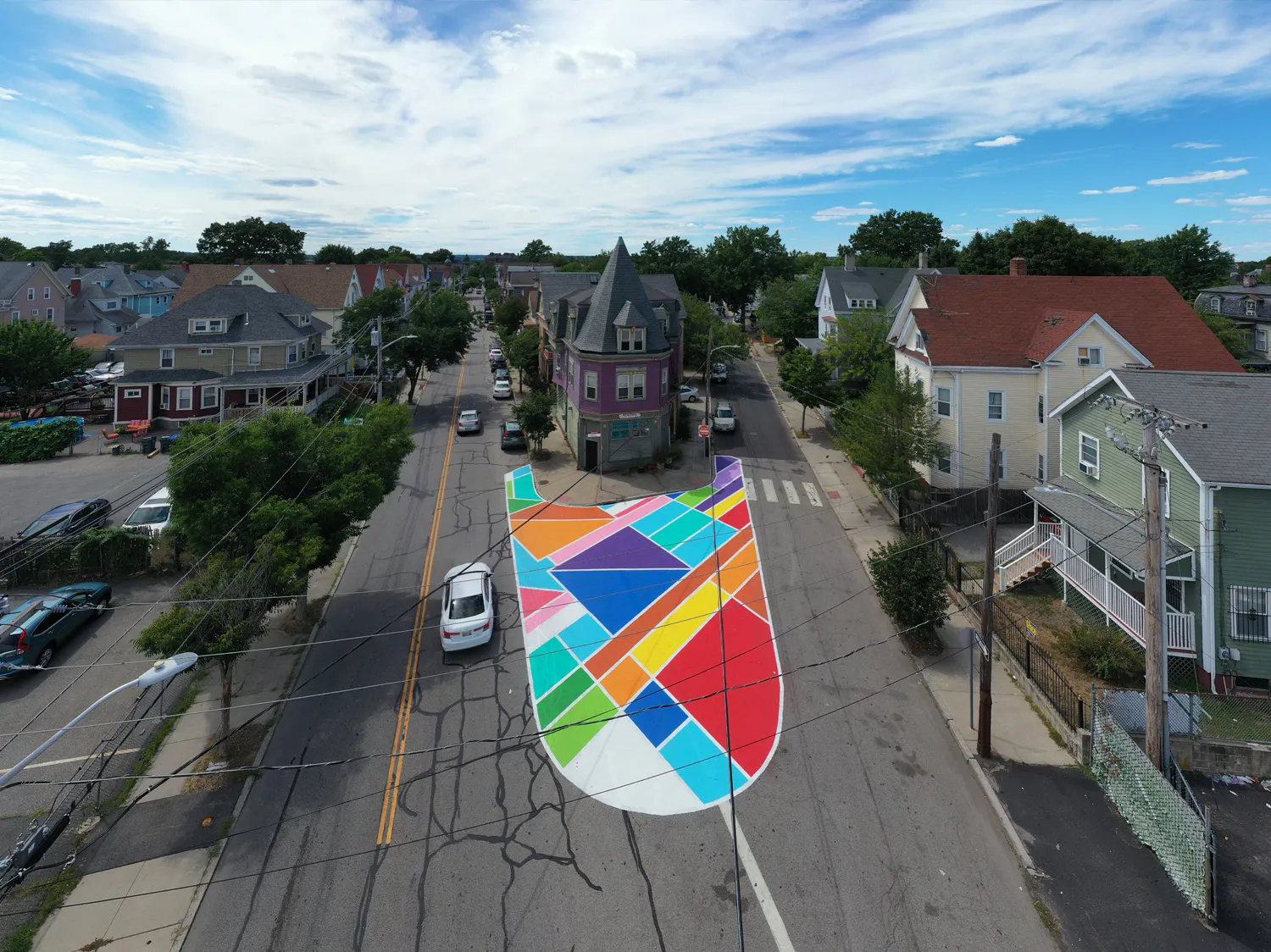
In August, numerous partners in Providence – including city leaders in public works and tourism, as well as Rhode Island Latino Arts – helped bring to life a mural by local artist Rene Gómez at a dangerous intersection. They believe the site can also serve as a pop-up location for performances and other events. The nearly $28,000 project covers 1,400 square feet.
Starkville, Mississippi
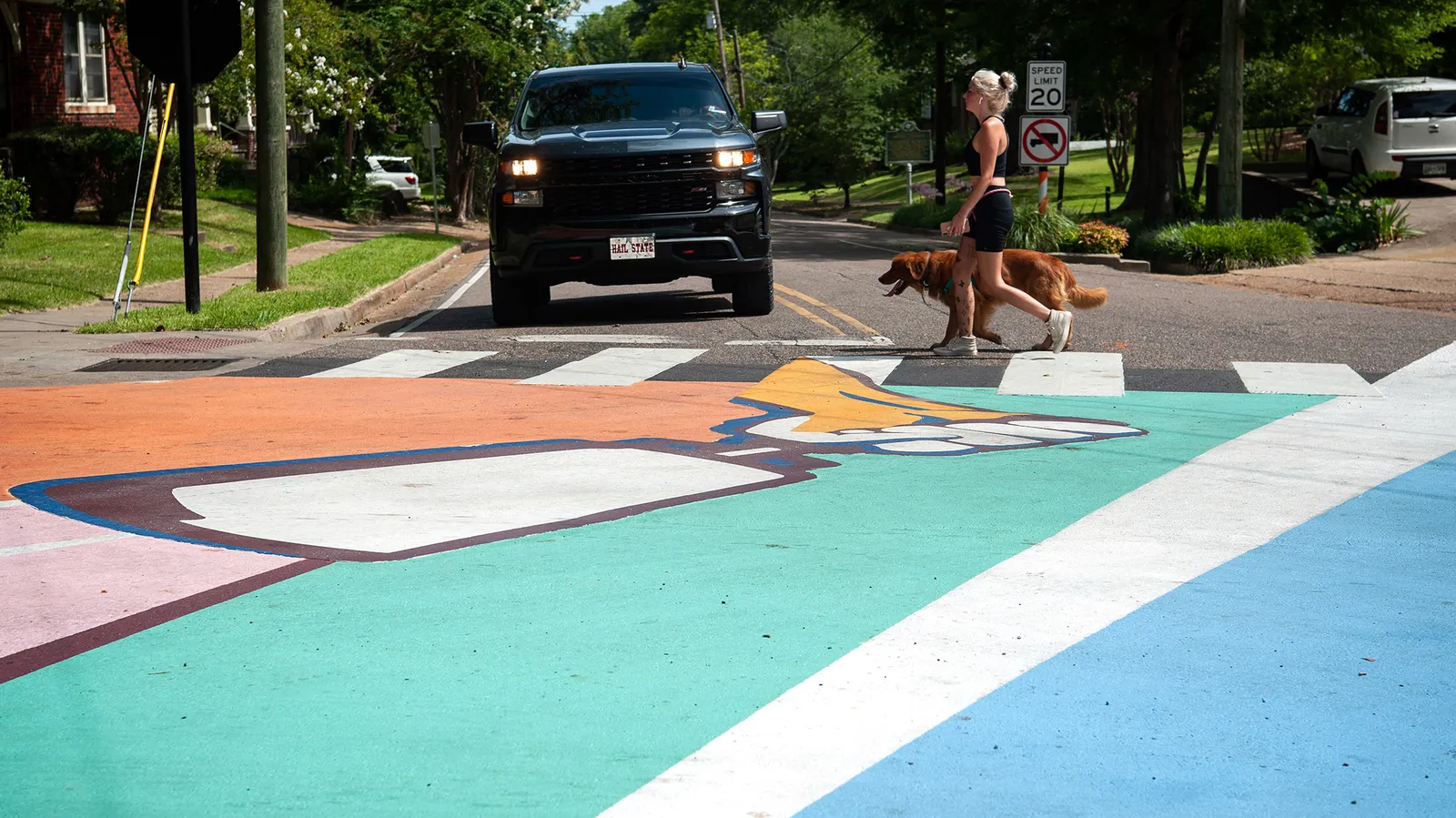
As the home of Mississippi State University, the college town this summer added intersection murals at three locations after receiving community input through surveys. The murals had a cowbell theme — one of the university’s symbols. The effort also involved painting crosswalks, with square footage totaling 9,750.
Correction: A previous version of this story misattributed the sources of some photos. We have updated the source information accordingly.



